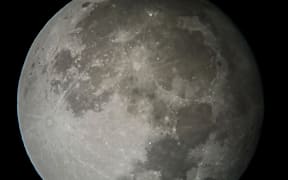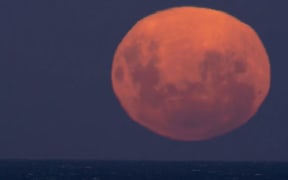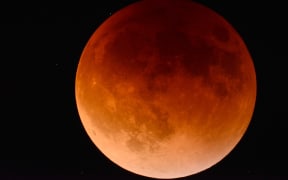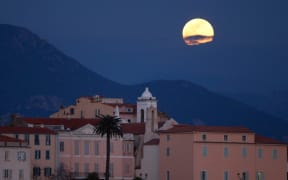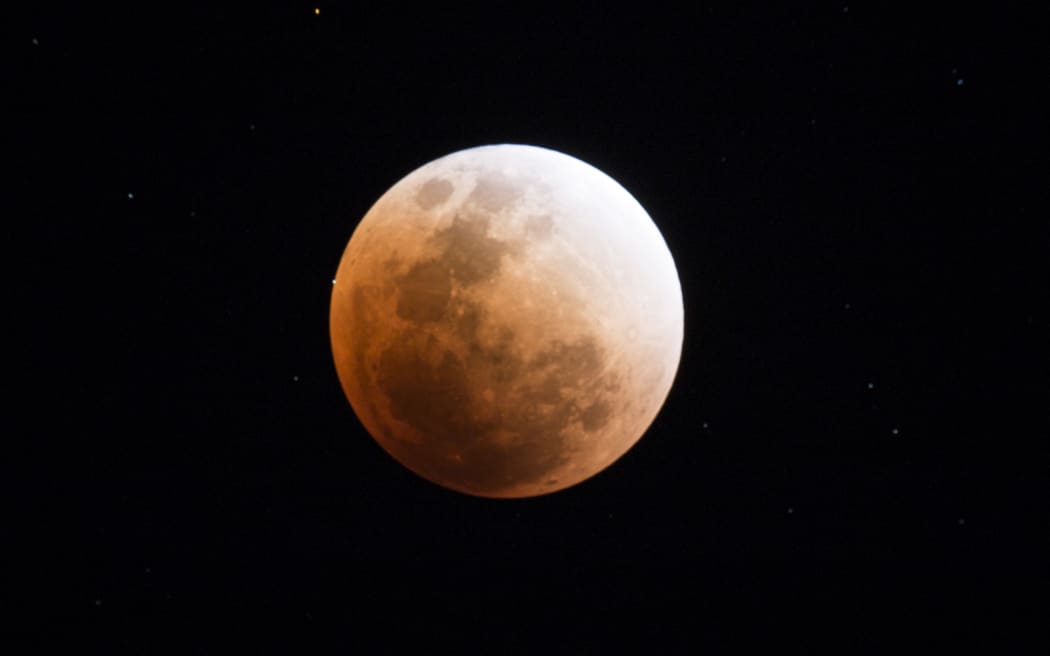
But while the Earth's only natural satellite will definitely look super on Thursday night, it will not actually be blue. Photo: YE AUNG THU
Explainer - The world will witness a rare 'super blue moon' later this week, the first in 14 years and the last until sometime in the 2030s.
But while the Earth's only natural satellite will definitely look super on Thursday night, it will not actually be blue.
So how did it get this peculiar name? And why is there disagreement on when the next one will be? Let's break it down.
What's so 'super' about it anyway?
Before we get to the 'super' part of the 'super blue moon', we first have to remember that it's also a full moon. That's when the moon is on the other side of Earth to the Sun, so the side of the moon facing Earth is completely lit.
The moon's orbit is not a perfect circle. Like all heavenly orbits, it's an ellipse - in the moon's case close to a circle, but not quite. At its usual furthest it's about 405,500 kilometres away - known as the apogee, and at its closest just 363,000km - the perigee.
It doesn't reach these extremes every time it orbits, but when it comes close - and at the same time is full - it's deemed a 'supermoon', a term coined in 1979 by US astrologer - yes, astrologer, not astronomer - Richard Nolle.
The exact definition of just how close a supermoon has to be is a matter of debate, though it's typically thought to be under 360,000km. Thursday's supermoon will be just 357,181km away from Earth, making this the brightest of this year's supermoons.
"Supermoons look about 8 percent bigger and about 16 percent brighter than an average full moon," Stardome astronomer Rob Davison said.
Despite the term 'super', supermoons aren't actually that rare - there are usually three or four a year. This year alone has four - one in July, one in September and two in August.
And it's that second appearance in August which brings us to the 'blue' part of the name.
Feeling blue
The second full moon in a calendar month is known as a 'blue moon'. It's not clear where the name came from, as it has nothing to do with the moon's colour, which remains the same. Some accounts link it to the archaic term 'belewe', or 'to betray', because people using the lunar calendar felt betrayed when a second full moon appeared inside a calendar month.
Oddly enough, whether or not a full moon is 'blue' or not differs depending on where you are in the world because it's based on calendar dates, and - as New Zealanders are especially aware of - not everywhere in the world is experiencing the same date at the same time.
The first full moon this month arrived for Kiwis on the morning of 2 August, and this one will technically reach full moon status at 1.35pm on 31 August, so it counts - but the 'blue moon' the US will experience in December 2028, for example, won't be a blue moon here, because the second full moon won't kick in until 5.48am on 1 January, 2029 NZT. Sometimes a moon is considered 'blue' in some parts of large countries, but not in others.
But as space.com notes, the moon basically looks full for a night before and after the "imperceptible" moment it's technically full, so it kind of counts regardless.
Blue moons happen on average about once every two-and-a-half-years. Sometimes however, they happen twice in one year - in those years, February misses out on a full moon altogether. NASA says getting a second blue moon in a calendar year only happens about four times a century.
What if I miss this one?
If you miss the super blue moon this Thursday, just how long you'll have to wait for another depends on who you ask.
See, it's not just calendar dates that mess up just what constitutes a blue moon - it's the seasons too. While the common definition of a blue moon is a second full moon in a calendar month, some also consider a third full moon inside a single season with four full moons as a blue moon, even if it didn't happen inside a calendar month.
That's why some sites are reporting the next super blue moon, after this one, as taking place in August 2032 on 21 August - though clearly the previous full moon could not also have taken place inside August.
Others - including NASA - use the calendar month definition, so have the next super blue moon as arriving in 2037.
Adding to the confusion is that there might be two of them that year - January and March - depending again on where in the world you live.
Regardless of any 'colour' designation, supermoons are an impressive sight - if the weather plays ball.
"The super blue moon will rise towards the east as the sun sets towards the west, and will be visible in the sky for the whole night," Davison said. "If it's a clear night, people will be able to see it from all over the country."
